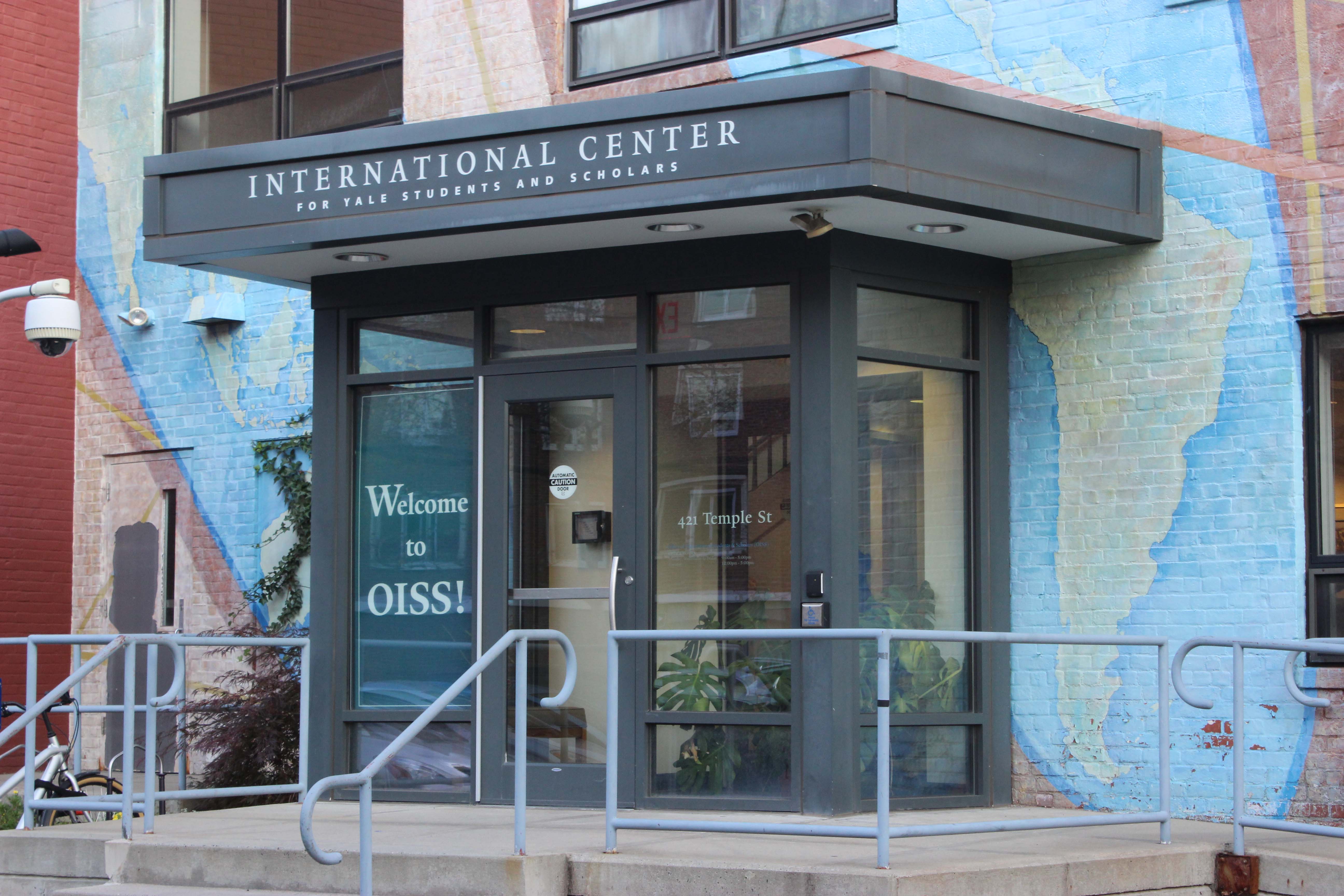
After over 1,000 attendees packed into Battell Chapel last Wednesday to learn about issues faced by students of color at Yale, a smaller contingent of students met later that night in the Branford Common Room to voice a different perspective: that of Yale’s international students.
More than 80 students attended the discussion, which was hosted by the International Students’ Organization and the Office of International Students and Scholars. International Peer Liaisons and past head counselors of the Orientation for International Students were also in attendance. The meeting, which lasted four hours and stretched late into the night, allowed attendees to contemplate the role of international students within ongoing campus conversations about racial tensions at Yale. The following day, the International Students’ Organization released a statement affirming its support for students of color as well as any other students who have felt discriminated against at Yale. The statement highlighted the different challenges faced by international students looking to speak on racism, due to the different ways in which race, class and ethnicity intersect in their home countries. It also called on the University to provide better resources for the wellbeing of the international student population.
“We would like to acknowledge that our statement release has been delayed — not because we have not recognized the significance of the movements that have been happening around campus — but because it has taken time for us, as international students, to understand our role and place within this movement,” the statement read.
During the discussion, international undergraduates said their experiences with race and discrimination in their home countries often differ from the experiences of Americans. ISO Vice President Reem Hindi ’17 noted that, prior to arriving at Yale, many students had never identified as either white or as a student of color — so when they are asked to do so at Yale, she said, it can cause confusion.
Camila Franco ’18, who attended the discussion, said that currently in America, race is the focus of most discrimination, but in other countries, people may discriminate more on the basis of class or nationality, regardless of skin color. She added that some international students have had limited exposure to distinctions between what it means to be black, African or African-American.
Some who find themselves labeled minority students at Yale have never experienced being in the minority before. In Swaziland, where Wabantu Hlophe ’18 is from, black people are the majority, he said. His experiences and struggles as a black person have been different from the struggles of black people who were born and raised in America, Hlophe said. Yet American problems with race also extend to foreign students studying here, he added.
“On the one hand, as a black student, I wholly agree [with] and support the efforts by students of color,” Hlophe said. “At the same time, my race doesn’t fully characterize my experience and my relationship with systems of oppression or the realities history has given us today.”
ISO Cultural Council Chair Frankie Andersen-Wood ’18 noted that there is a disconnect between the image that Yale markets to international students and the reality of the student body’s composition.
“I came to Yale and was surprised there that there were so many Americans because it doesn’t quite match up with the brochures describing Yale as an international university,” she said. “I think international students maybe haven’t contributed their opinions as much to the discussion, and there are so many reasons why, some don’t understand and some don’t know how they fit in.”
Students at the discussion suggested a number of solutions to address these discrepancies. ISO President Yuki Hayashi ’17 said adding an educational component to international student orientation about how race is viewed in America could help mediate different understandings about the definitions of race and discrimination. As long as international students live and attend school in the United States, it is important that the international student community understands what racial discrimination means here, she said.
Attendees also pointed to Yale’s cultural centers as an insufficient source of support for international students. They highlighted the need for a physical space of support similar to the cultural centers, beyond the current Office of International Students and Scholars, specifically for the wellbeing of the international student population.
While Yale provides the cultural centers as resources for students of color, the centers often cannot cater to the international community in the same way they do to American students of color, Hindi said. For example, she said, while international students from Africa may be part of the Afro-American Cultural Center, the experiences of an African student are different from those of an African-American student. International people of color are falling through the cracks because they do not identify with the cultural centers, Andersen-Wood said.
Franco said the creation of an international student center, with the capacity to hold social events like the Af-Am House does, would provide a site of social support for international students of color. While international students currently have access to the Office of International Students and Scholars, which provides administrative functions like arranging visas, the office does not offer as many free open spaces for student use, Franco said.
Hayashi cited the physical location of the office on Temple Street as another constraint, adding that not only is it separated from the cultural centers, but it is also inconvenient for students to casually go there and discuss their problems.
“I think a component of what is happening, of the movements, is making an inclusive community,” Hayashi said. “I just want to make sure international students of color are included in that inclusive community that people are trying to make.”
11 percent of Yale College’s freshman class last year was international.







